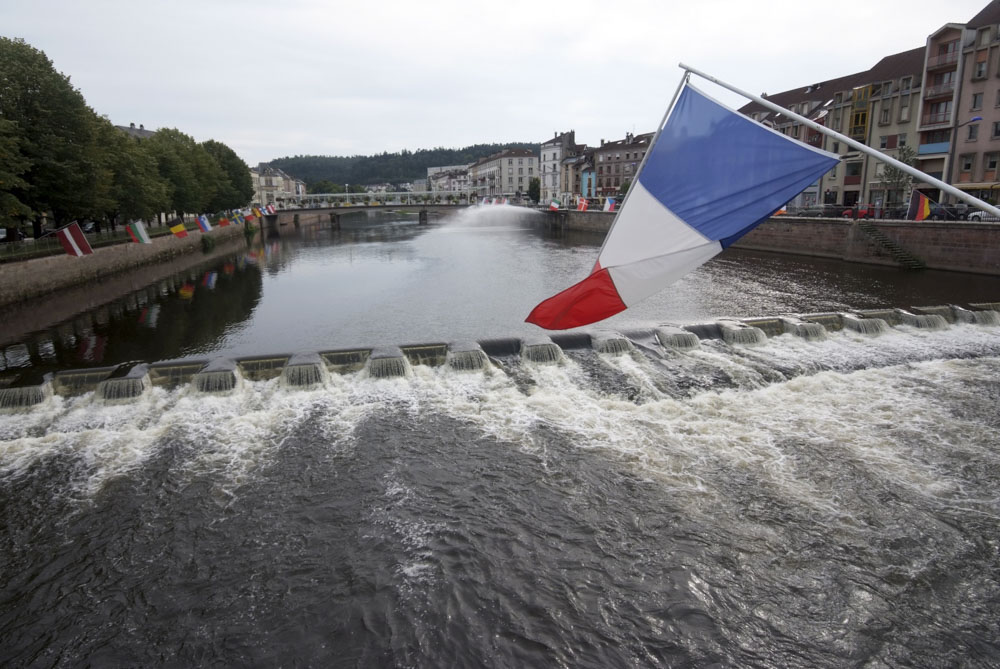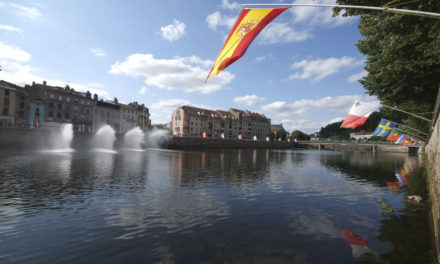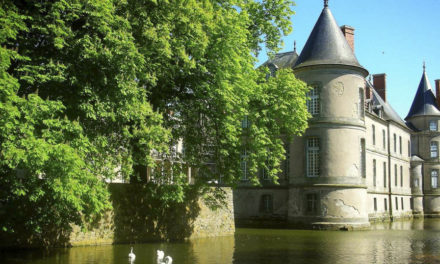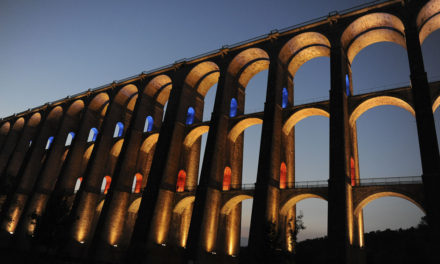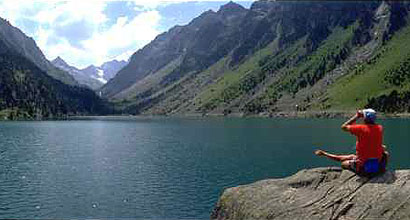Image – French flag flying over the Moselle river in Epinal, Copyright Atout France/Michel Laurent and CRT Grand Est.
Vosges, in the south of Lorraine, combines a rich history with a magnificent natural landscape. It has always been at the crossroads of history, peopled by the Celts, the Romans and the Merovingians. More recently the Vosges has been on the frontline of bitter conflicts between France and Germany. But it is a land which has always retained its own identity – the small villages and farms tucked into the valleys of the Vosges mountains preserve a way of life that has been the same for centuries, and the famous breed of Vosges cattle with their brown and white markings can still be seen on the upland pastures. There are stunning mountain drives to enjoy, and the hills are threaded with well marked pathways for walkers to explore, bordering the route des Cretes. In winter, the Vosges mountains become a mini Switzerland covered in a Christmassy blanket of snow. There are several popular ski resorts, and ancient ice age lakes now offer the pleasures of swimming and boating. The therapeutic benefits of water can be enjoyed at several spas. Lakes and rivers are full of carp, and pike, delicious served with a sauce of cream and diced bacon, vin gris or beer. Local blueberries and Mirabelle plums are made into tarts and soufflés.
Towns in the Vosges
Hotels in Vosges
Epinal
The town of Epinal, situated on the edge of the Moselle river and surrounded by forests, has long been a centre of the wood industry. It is most famous for its coloured prints and print-making tradition. The Imagerie d’Epinal (Epinal print shop) founded by Jean-Charles Pelerim in the 19th century, became renowned for its prints – distributed by pedlars throughout the country – among them many famous storybook characters like Puss-in-Boots and Little Red Riding Hood, Today the phrase “image d’Epinal” has entered the French language to mean something very obvious. Tours of the print shop can be arranged. Though Epinal was badly bombed during the Second World War, there are still architectural gems to see – the arcades of the Place des Vosges, the remains of the chateau and the Basilique St-Maurice, some of which is 11th century. On an island in the middle of the river is the stunning modern Musée Departmental d’Art Ancien et Contemporain with luminous glass walls, collections of local archaeological finds, a whole section devoted to the Images d’Epinal and an excellent art collection with work ranging from drawings and paintings by Rembrandt, Brueghel and George de La Tour, to modern works by Gilbert and George and Andy Warhol. The town has lots of parks and gardens and boats and river cruises can be taken from the riverside marina. South of Epinal is the American cemetery of Dinoze with a memorial to the 7000 soldiers who died in World War II.
Remiremont
Further south along the river is Remiremont, with its pretty arcaded streets, and Plombières-les-Bains, a spa town with glorious mountain views, which has been famous for its waters since Roman times, and where you can still bathe in a Roman steam bath. “I have never tasted so deeply of the beauties of nature,” wrote Madame de Stael in 1786 after a holiday here. Gérardmer to the east, nestling at the end of a cool blue mountain lake has diversions galore for the sportif – sailing, boating, waterskiing, and windsurfing, swimming and fishing as well as excursions into the peaceful green forested valleys around to discover sparkling waterfalls and eye-stretching views. Other spas well worth a detour include Vittel, and Contrexéville, with its wonderful pavilion and mosaic columns. Both are now famous for their bottled mineral waters. The region cherishes many traditional crafts and the town of Mirecourt produces fine musical instruments, in particular violins and cellos.
Domrémy-la-Pucelle
The pretty little village of Domrémy-la-Pucelle in the west of the department on the Meuse river is the most legendary site in the Vosges. It was here in a tiny peasant’s cottage that Jeanne d’Arc was born, in 1412, and here she spent the first 18 years of her life, before setting off to defend the French king. The Centre Johannique tells the history. Two kilometres to the south is the Basilique du Bois-Chenu, a 19th century structure of black and white stone with a richly embellished interior, built where Jeanne is supposed to have heard her angelic voices. There is a pilgrimage to this sacred place every year on May 2nd.
| Title | Address | Description |
|---|---|---|
VOSGES | Vosges, 68380 Metzeral, France |

